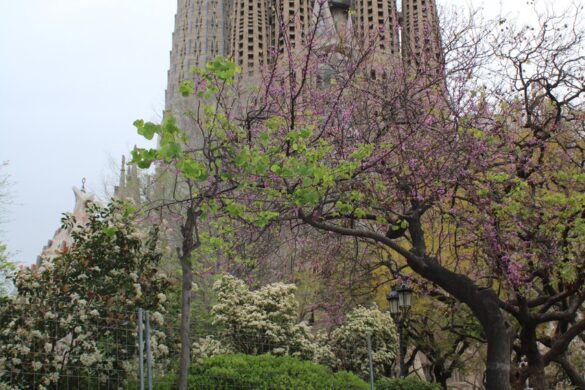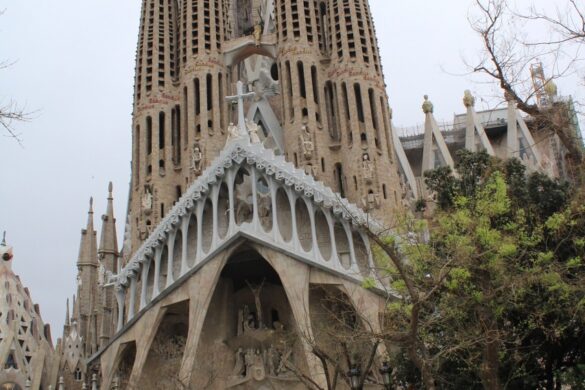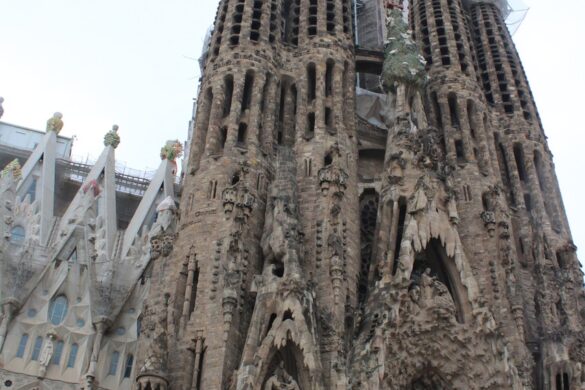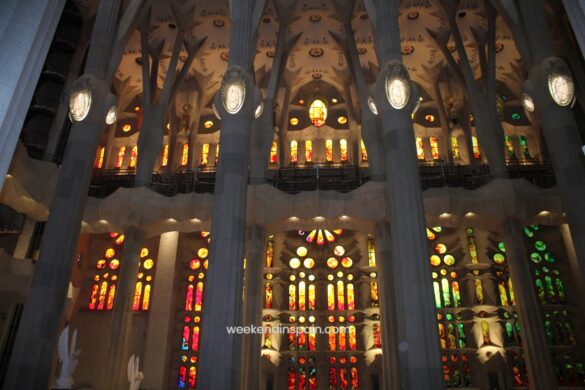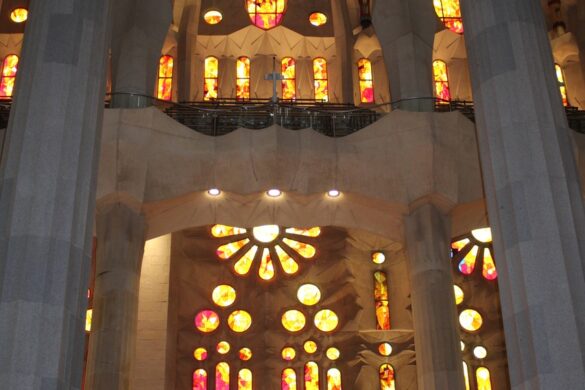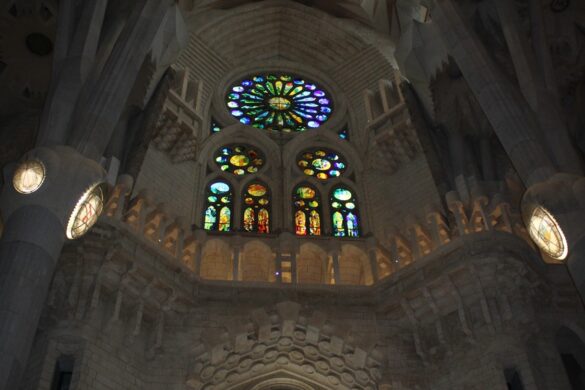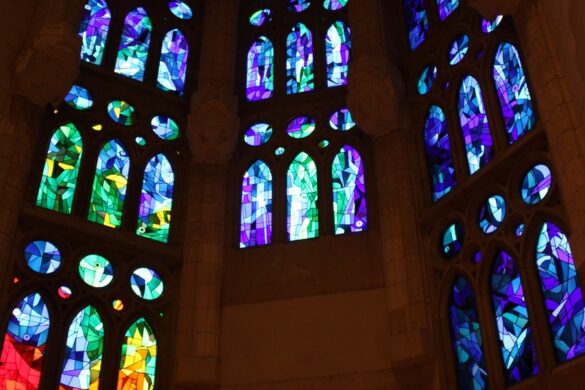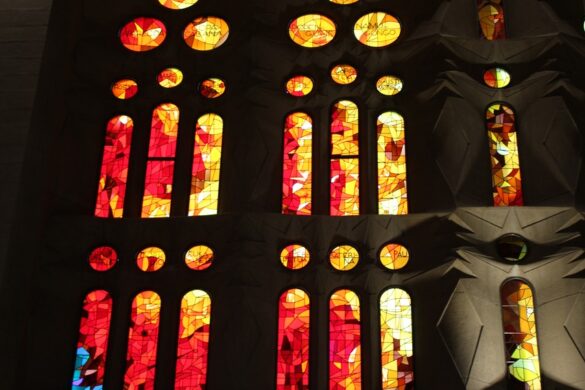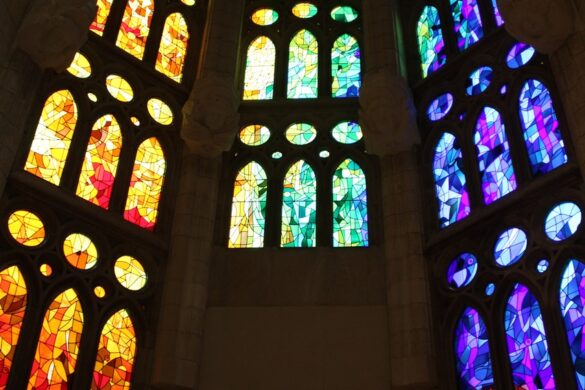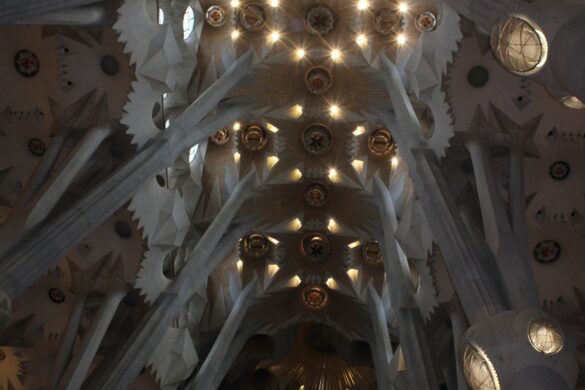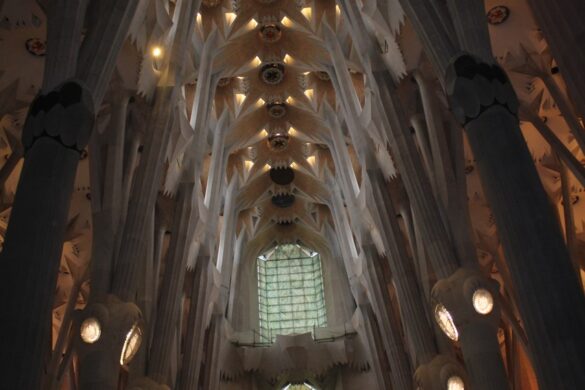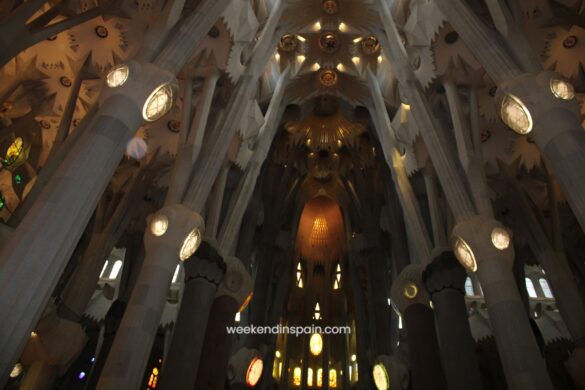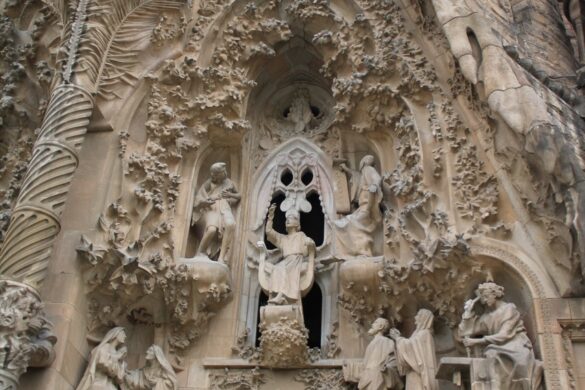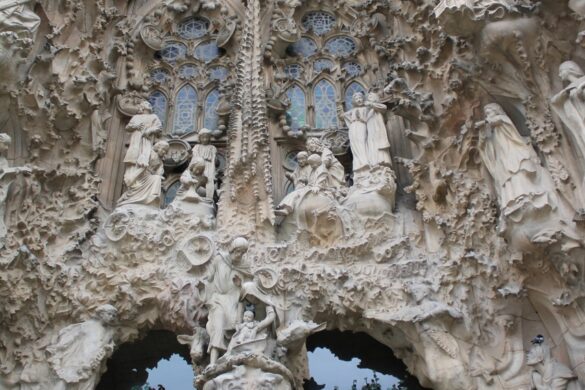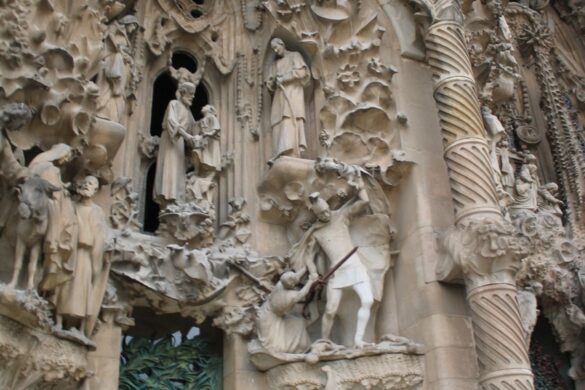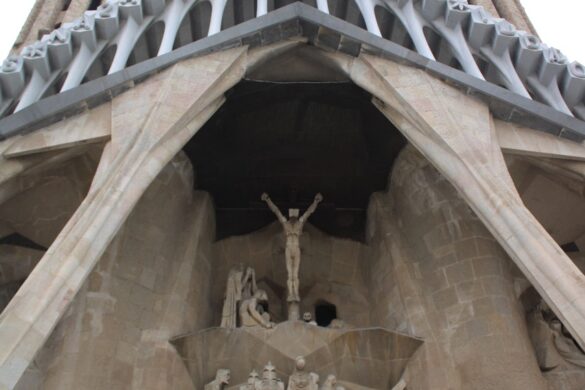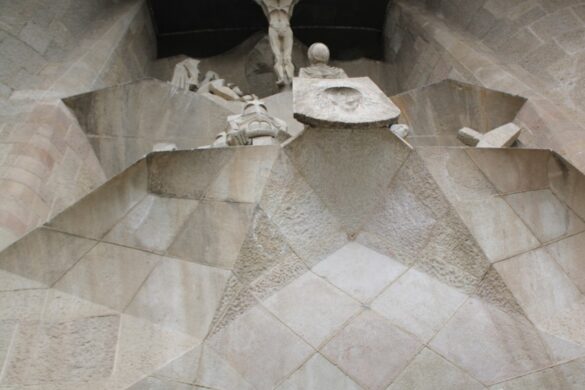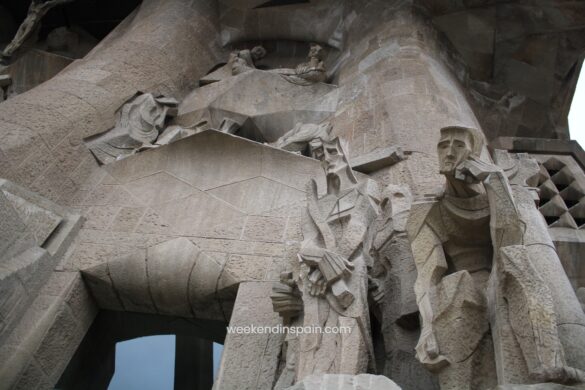Best time to visit Sagrada Familia, along with other useful tips is what I’m going to talk about in this blog post.
If you google “Spain’s most visited monument,” you’ll get “La Sagrada Familia” at the top line of the search engine results’ page. The man behind this gem of a masterpiece is none other than Catalonia’s own, Antoni Gaudí.
During his lifetime, Antoni Gaudi was only able to complete the crypt and the Nativity Façade. However, even after his death, his vision of La Sagrada Familia still continues, the remaining construction continues with the help of scale models.
In this article, I’ll cover all the important details about La Sagrada Familia, and also offer my advice and tips. Let’s delve further into this historic temple’s history.
Table of Contents
SAGRADA FAMILIA HISTORY
Sagrada Familia is a Roman Catholic Basilica and is one of the most visited monuments in Barcelona. The construction of Sagrada Familia began in 1882 by an architect called Francisco de Paula del Villar y Lozano, but who, due to differences with the developers, was then replaced by the genius Antoni Gaudí in 1883. Gaudí came up with his own ideas and design, by working on the front part of the temple, as he knew that the project would go on for centuries.
Sagrada Familia is a mix of Catalan Modernism, Gothic, Catalan Noucentisme and Art Nouveau though the architectural structure and design is inspired by nature since Antoni Gaudí was quite fond of nature. In fact, most of his other works are also based on nature.
Before his death on 10th June 1926, Gaudí was able to see the temple’s first tower that he had finished working on. He was laid to rest at this very monument, Sagrada Familia, in the chapel of the Virgen del Carmen. There are more than 10 chapels in the crypt.
On 7th November 2010, Pope Benedict XVI consecrated the Temple and granted it the status of a Minor Basilica.
THE TWISTED COLUMNS IN THE FORM OF LARGE TREE TRUNKS
Below are the columns you’ll see, which are shaped and designed like massive tree trunks that are beautifully twisted, and it looks as if you’re in a sequoia forest. Gaudí loved nature, which is why he decided to build the temple in the form of a forest. It’s a great combination of mixing nature with extraordinary architectural beauty.
Not only is the exterior architectural design of Sagrada Familia beautiful, but so is the interior. Taking an example of the columns, which are designed and shaped like massive tree trunks reaching up to the ceiling. The trunk-like columns only add extra beauty to the vaulted ceiling, as well as the stained-glass windows of different colours – the contrast is fantastic.
MULTI-COLOURED STAINED-GLASS WINDOWS
As soon as you see the beautiful, multicoloured stained-windows, you’re in awe, as on each side of the walls, there’s a totally different contrast and combination. For example, the stained-glass windows on the side of the nativity façade have the cold colours, such as blue, yellow, and green, which bring in the morning sunlight into the basilica, which deeply reflects upon the life and joy of Jesus Christ, whilst on the façade of the passion, you have red and orange ones that bring the evening sunlight in that manifest sacrifice, suffering, and death. The change of shades during the course of the day is a beautiful experience to witness.
THE CENTRAL NAVE
The central nave vaults reach forty-five metres, whilst the side nave vaults reach thirty metres. The naves are supported by tree branch-like columns. The topmost part is always illuminated, as the stained-glass windows on each side are transparent. The columns supporting the nave display a beautiful reflection of different colours, coming from the colourful stained-glass windows from the walls of the side aisles.
THE NATIVITY FAÇADE
The Nativity Façade is divided into three porticos, representing three theological values: Hope, Charity and Faith, and is dedicated to the birth and childhood of Jesus Christ. Since Gaudí was fond of nature, he decorated the façade with marble-made animals, biblical figures, and a huge tree.
Sadly, the façade is the only part of La Sagrada Familia that Gaudí saw built before his untimely death.
THE PASSION FAÇADE
Unlike the Nativity Façade, Gaud wanted this façade to be dark and simple, as it highlights the passion, sacrifice, suffering, and death of Jesus Christ. There are a number of sculptures of biblical figures on this façade as well, each one telling us about the events in the form of art and architecture.
BEST TIME TO VISIT SAGRADA FAMILIA – 2023
Best time to visit Sagrada Familia is in the morning. The visit starts at 9 a.m. I’d personally recommend that if you can, choose the first hour, or you could even visit at either 10 or 11. You will be given an audio guide, which is highly recommended.
How long would the visit take? Well, you can see all the magnificent architecture, stained-glass windows, etc., and the bell tower, in, I would say, an hour and a half, but you could be out in an hour or so if you’re not taking lots of pics.
When we visited the temple on the 12th of April 2022, we couldn’t visit the bell towers because they were still temporarily closed due to restoration work in progress, but we’ll definitely revisit the temple in the future. Bear in mind that you’re only allowed to visit one tower due to their policy. We’ll definitely check it out in the near future, as the views from the top are mind-blowing.
SAGRADA FAMILIA TICKETS
https://sagradafamilia.org/en/tickets-individuals
An individual basic ticket costs €26, and if you’re visiting the bell tower, it costs €36. I’d highly recommend opting for the €36 one as it’s probably a once in a lifetime opportunity and the views from atop the tower are mind-blowing. Bear in mind that you’re only allowed to visit one of them – they say it’s their policy.
HOW TO GET TO SAGRADA FAMILIA
Sagrada Familia is located at C/ de Mallorca, 401, 08013 Barcelona. Their telephone no is 932 08 04 14
There are two metro lines that take you to Sagrada Familia, L2 and L5. Depending on where you’re staying, taking a bus could be another option.
Here are the buses you could take; 19, 33, 34, 43, 44, 50, 51 H10, B20 and B24.
Whilst the top link should suffice, I just thought I’d also provide you guys with a link to the official website of Barcelona’s transport network.
If you want to make the most of your day, though, it’s advisable to take the underground. And if you happen to have your hotel or Airbnb close to La Sagrada Familia, or even near Passeig de Gracia, you do not need to rely on any public transport.
If you visit the basilica early in the morning, you can easily visit Casa Battlo and Casa Mila – La Pedrera, also on the same day and without having to take any transport. In my next two articles, I’m going to cover Casa Battló and La Pedrera.
If this article was helpful to you, or if you’d like to give any sort of feedback or comment, please feel free to share your thoughts. Thank you and enjoy your holiday in sunny, beautiful Barcelona.
